QuestionGood morning...I will be completing the purchase of a 16.2, 10 y/o, off-track thoroughbred. Current barn indicates he was near emaciated when he came to them off auction about 3 months ago, but he has gained weight, has a good energy level, coat is shiny and smooth, mane and tail are thick and glossy; hooves are healthy. The withers are easily visible; what I know is missing is the roundness just below the withers on either side; they need to "fill-in." Ribs are easily felt when I run my finger along his side but unless you know to look, they are not readily visible. The shoulder bone does protrude slightly but again, to an inexperienced eye it would be hard to see. There is definition on either side of the spine but not overly deep. Hip bone, again, is visible to the experienced eye and the croup has slightly more angulation/sunken in, than I would expect to see on a horse in good weight.
Here is my problem. The horse is currently being fed on 2.5 quarts, 2 times daily, of Horsemen's Edge pelleted 10:6, along with 2 flakes of hay 3 times daily. The barn where I board at is feeding a textured sweet feed, no clue as to ingredients/nutrition information as it is a company's special mix, but it is a molasses heavy sweet feed.
My previous horse of roughly the same height and build, who was doing about the same amount of work as this new one will be, maintained good health and body weight but I did have other supplements for coat, hoof and digestion (older horse). My concern is that a molasses heavy sweet feed, when the horse has been on pellets, is going to cause digestion issues and/or an energy spike. It has been suggested to leave him on the pellets, makes sense, and supplement with pelleted Rice Bran to aid in the weight gain. I can't, however, find any listing or suggestion of how to apportion the normal pellets to the rice bran. Since the rice bran is so much higher in fat, I am guessing that a 50/50 mixture of pellets to rice bran will be too high. Since the barn feeds based on quarts and we do not have a scale available, I need to figure out how to convert. They use a standard 2 quart scoop. Thanks
AnswerHi Terese,
Thank you for your question. When bringing a horse back from the brink of starvation, it is always important to proceed slowly and with caution. The farm that he is coming from has started him on the right path of gaining weight and I have a few suggestions and answers to your question.
First and foremost, I would suggest that you put this horse on a quality prebiotic and frequently recommend LifeForce Formula from Alltech, Inc. This will help restore an effective balance of bacteria in the horse's hindgut and put in on the way to being an efficient forage digestor. I would also suggest that you slowly work your way to feeding him hay free choice. You should never underestimate the value of hay in your horse's diet, both for the amount of energy it brings to the diet, but also for the digestive health it supports. Your horse should about 36-40lbs of food daily, and most of that should be hay. I'm not sure the size of your bales of hay but 6 flakes a day may not be enough. More importantly, a horse should never go more than 4 hours without eating as it can lead to the development of ulcers and other digestive upsets. I'm a real fan of feeding a horse as much hay as they want, and as long as your horse's digestive system is working well (which the prebiotic will help with), there is no danger in doing so.
The truth about pelleted feeds is that they can contain the very same ingredients as a sweet feed, including molasses, and are not necessarily any 'safer' a feed than a textured feed or whole grains. In fact, you can put just about anything into a pellet and as far as the horse's digestive system is concerned it is the same as feeding a texture feed. Horsemen's Edge is a pellet that will contain very much the same ingredient base as a sweet feed and is likely to be starch based and contain cereal grains like corn, barley, oats. I can't say with any certainty if there is any molasses in the pellet, so that could be about the only difference between the pellet and the sweet feed you are describing. For that reason, I don't see any reason to keep him on the pellet over the sweet feed. The Horsemen's Edge does contain 6% fat, and we are uncertain how much fat is in (on) the sweet feed...so the addition of rice bran to the sweet feed (if that's what you decide to feed) may be a good idea to maintain a slightly higher fat content to the ration. Rice bran is a fat supplement and not a complete feed, so you would top dress it (add it to) the complete feed at whatever rate you determine you should feed. The company providing the rice bran will make some feeding recommendations on the bag or tag that you can follow, and each company's version will be slightly different depending on their formulation. When feeding a high-fat supplement, you are going to want to phase it into the diet gradually as the horse's body needs to acclimate to the higher fat levels. Start with a cup per feeding and work your way up to the recommended feeding rate. Most rice bran products have a 2 pound max feeding rate, so that's equivalent to about 8 cups daily.
I hope that helps, and if you have any other questions please do not hesitate to ask.
Thanks, Corlena

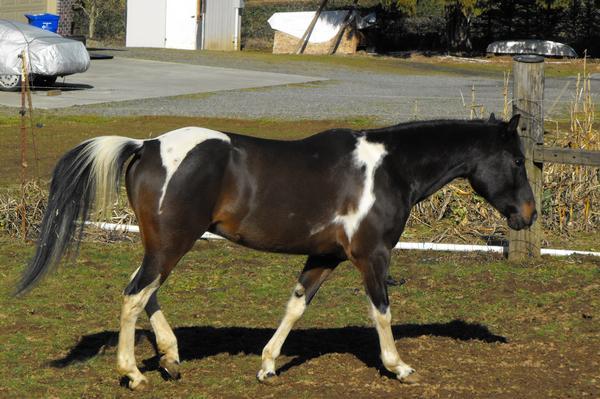 loss of appetite
QuestionElliott
QUESTION: i have a question abou
loss of appetite
QuestionElliott
QUESTION: i have a question abou
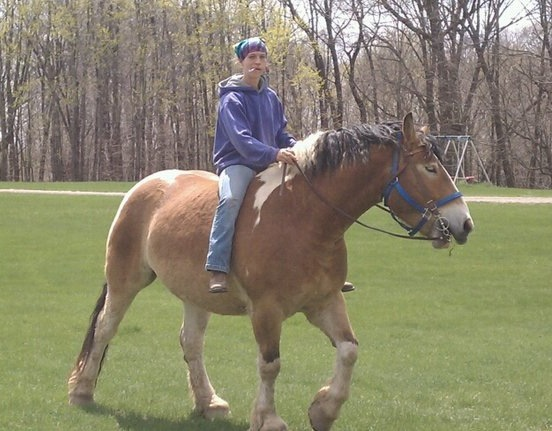 My new draft horse.....
Question
Bubbs Gentle Giant
I have just pu
My new draft horse.....
Question
Bubbs Gentle Giant
I have just pu
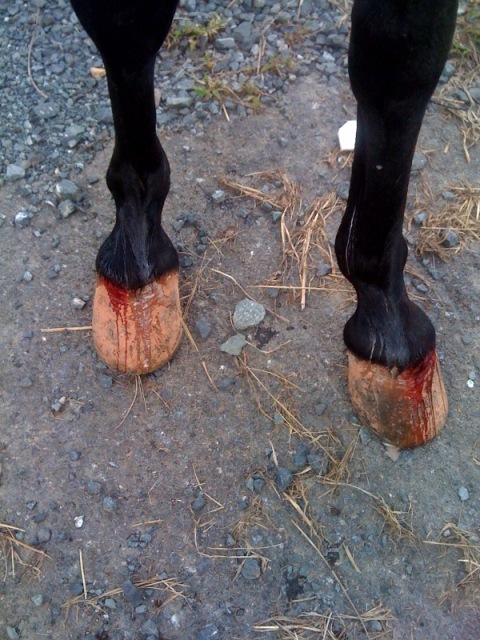 bleeding hooves
Question
bleeding
hi corlena! I have attached a photo s
bleeding hooves
Question
bleeding
hi corlena! I have attached a photo s
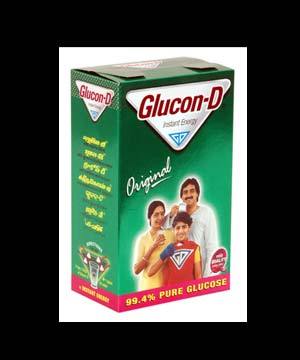 adding rehydrating supplement in the water bucket
Question
glucod D
hello maam, here in india, cl
adding rehydrating supplement in the water bucket
Question
glucod D
hello maam, here in india, cl
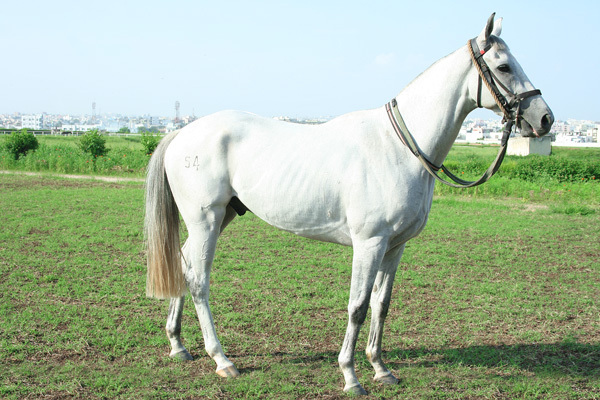 guessing the horse weight seeing it
Question
guess weight
hello maam. this is a thor
guessing the horse weight seeing it
Question
guess weight
hello maam. this is a thor